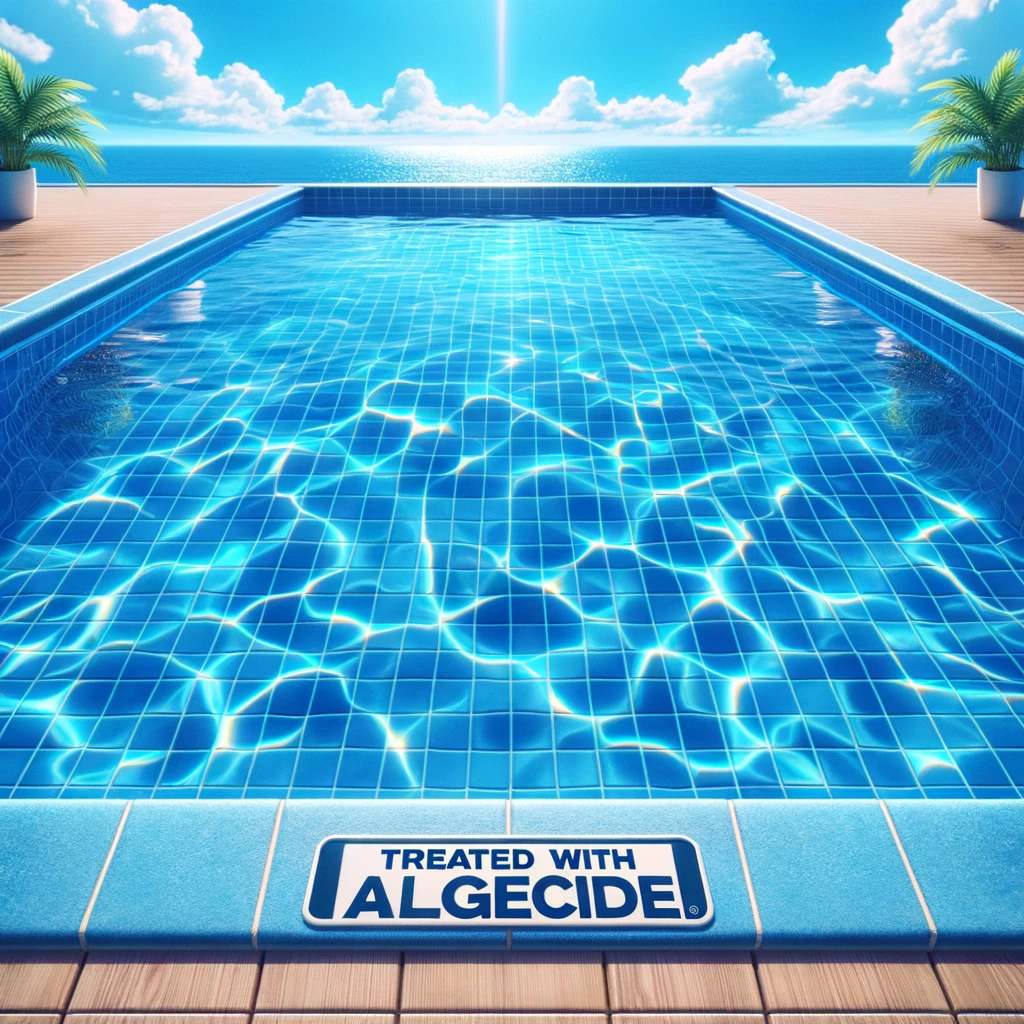Algae prevention in swimming pools is crucial for maintaining the cleanliness, hygiene, and safety of the pool water. Additionally, algae can become a breeding ground for bacteria and other harmful organisms that pose a threat to the health of swimmers. Therefore, in order to ensure the cleanliness and clarity of the pool water, it is essential to take effective measures against algae.

The Role of Algaecides in Pool Maintenance
A. How Algaecides Help Control Algae Growth
- Inhibiting Photosynthesis: The chemicals contained in algaecides can hinder the photosynthesis process of algae, thus impeding their growth and reproduction.
- Destroying Cell Structure: Some types of algaecides can destroy the cellular structure of algae, leading to their death.
- Weakening the Living Environment: By changing the conditions in the water, such as pH levels and metal ion concentrations, algaecides can create an unfavorable environment for algae, suppressing their growth.
B. The Benefits of Regular Use of Algaecides
- Keeping the Water Clean: Regular application of algaecides can effectively control the growth of algae, maintaining the cleanliness and clarity of the pool water.
- Reducing the Risk of Disease: Algae can carry or produce harmful substances. Regular use of algaecides can reduce the risk of these harmful effects.
- Enhancing the Swimming Pool Experience: Clean water provides a better swimming experience and increases user satisfaction.
C. Adverse Reactions Caused by Improper Use of Algaecides
- Deterioration of Water Quality: Using excessive amounts of algaecides or choosing inappropriate products can lead to deterioration of the water quality, affecting the normal use of the pool.
- Damage to Pool Equipment: Some strongly corrosive algaecides can damage pool equipment if not used correctly.
- Environmental Impact: Irrational use of algaecides can also have adverse effects on the surrounding environment.
- Harm to Human Health: If the pool water contains excessive amounts of algaecides, it can cause discomfort to the skin and eyes, and in severe cases, lead to physical discomfort.
Determining the Frequency of Algaecide Application
A. Factors Influencing the Required Frequency
- Pool Size and Usage Rate: The size of the pool and frequent use have a significant impact on how often algaecides need to be added. Larger and more frequently used pools require regular algaecide application to effectively control algae growth.
- Climate Conditions: In warmer or rainy areas, algae in swimming pools tend to proliferate more, requiring more regular algaecide applications. Additionally, heavy rain or prolonged high temperatures may necessitate more frequent use of algaecides to maintain pool cleanliness.
- Filtration and Recirculation: A swimming pool with an efficient filtration and circulation system may require fewer algaecide applications, as clean, debris-free water is less conducive to algae growth.
B. Recommended Frequency for Different Types of Pools
- Various types of pools, such as inground pools, above-ground pools, saltwater pools, and chlorinated pools, have different requirements for algaecide use. Consult with pool maintenance experts or refer to manufacturer guidelines to determine the appropriate application frequency for your pool.
C. Signs That You May Need to Adjust Your Algaecide Application Program
- Turbid Water or Loss of Luster: This indicates the presence of algae in your pool, suggesting the need for additional algaecide.
- Visible Algae: If you can see algae growing on the pool walls, floor, or surface, it is clear that your current algaecide application is insufficient.
- Unpleasant Odor: A musty or foul odor emanating from the pool indicates algae growth.
- Skin and Eye Irritation from Swimming: While there are many causes for skin and eye irritation, one of them could be the presence of algae in the water, affecting water quality.
By observing these factors and signs, you can ensure regular algaecide application in your swimming pool, maintaining a clean, clear, and safe swimming environment.
Therefore, cleaning and algae prevention in swimming pools is an ongoing task, requiring regular attention and maintenance by the user. Once an algae problem occurs, it is crucial to address it promptly, select the appropriate algaecide, and add it in the proper manner to quickly resolve the issue. Additionally, attention should be paid to the frequency of algaecide use and the proper application methods.

 Instant
Quote
Instant
Quote Email
Us
Email
Us